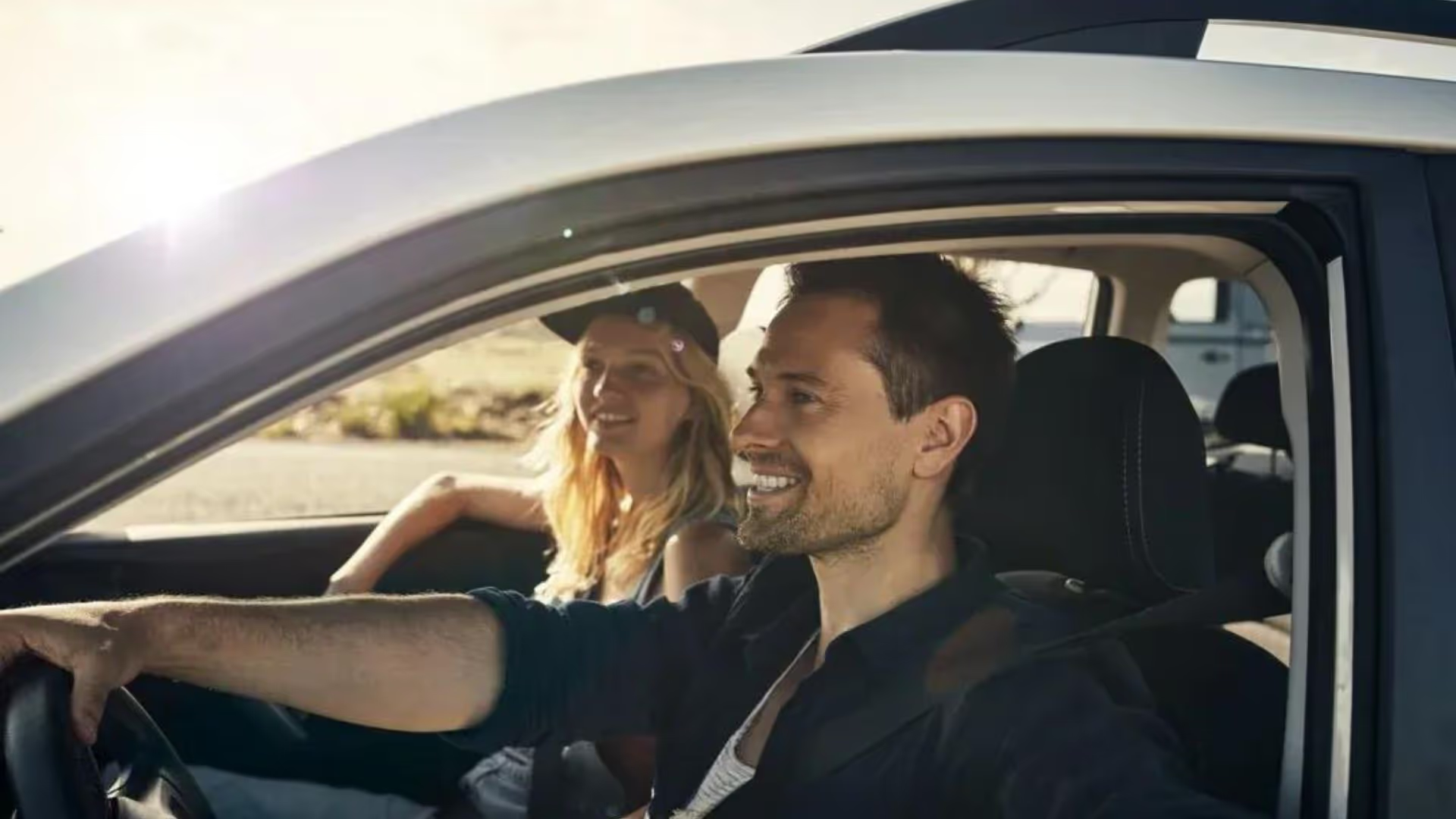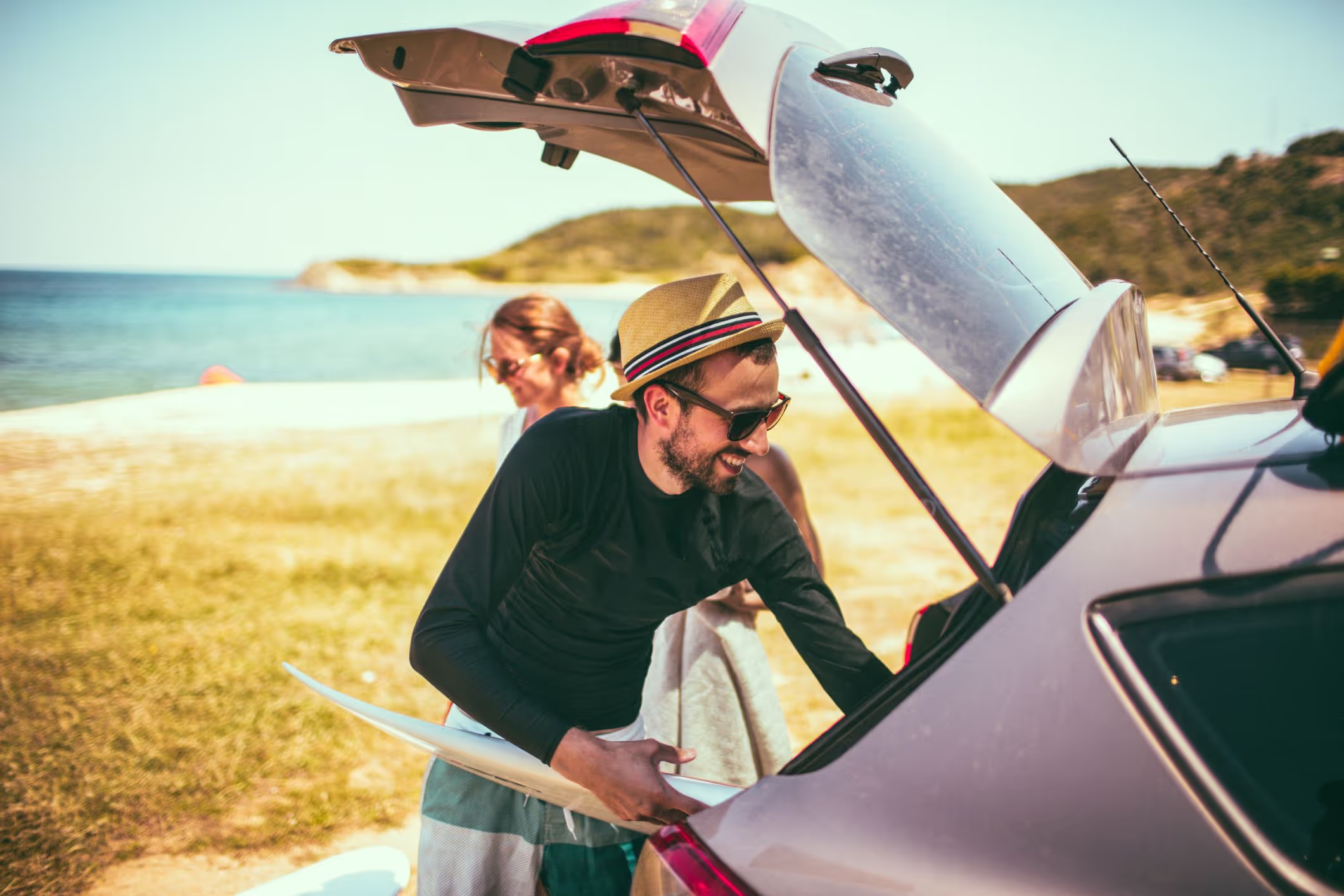Car Loans
The key to your
new set of wheels
Apply online today and secure your personalised rate in as little as 60 seconds.

Benefit from our expertise in financing over 43,200 new and used cars, allowing our customers to hit the road with their new wheels sooner.

Whatever type of car you're looking for, we have an option for you.
New car loans - Get the keys to your dream car quickly, with funds in as little as 24 hours
Used car loans - Not in the market for a new car? Discover your options for a used car loan
EV car loans - Get rewarded for going green with our discounted rates for EV’s
Just like choosing the perfect car, take the time to find the right loan.
Borrow up to $100,000
3-7 year loan terms
24hrs average settlement time
$0 early repayment fee
$0 monthly fee
Personalised interest rate

Car loan repayment calculator
Find out how much your loan repayments could be with a Plenti secured car loan.
Why choose Plenti for your next car loan?
Personalised rates
Plenti offers personalised rates tailored to your credit history and financial situation.
Easy online application
Our easy online application allows you to find the terms, rate and monthly payments that align with your budget.
Negotiating power
With financing ready, you can focus on negotiating the best price for your new car without distraction.
EV Rate Discount
Plenti offers a rate reduction of 0.5% p.a. for those financing new electric vehicles up to $90,000 through our collaboration with the Clean Energy Finance Corporation (CEFC).

A faster, fairer way to finance your new car
Our smart, paperless borrowing experience means you can spend more time cruising the open road and less time on your loan application.
Get your rate
Answer 10 quick questions to see your personalised rate in 60 seconds, without impacting your credit score.
Apply online
Complete your car loan application in under 10 minutes.
Funds are ready
Finalise your purchase online after pre-approval. Once approved, funds are transferred to the seller within 2 business days. You're ready to hit the road!
A 5-star experience from start to end
Buy your first car, dream car or somewhere in between with an award winning* fintech lender.





A secured car loan is a financing option where the vehicle itself is used as collateral. This type of loan is considered less risky for lenders, often resulting in lower interest rates compared to unsecured loans. If you're looking for a low-risk car loan with favourable rates, a secured car loan might be ideal.
In a secured car loan, you pledge an asset (the car you're buying) to secure the loan. Consequently, they offer lower interest rates. Many lenders accept a variety of assets, but it's common to use the car you're purchasing, provided it meets certain age and value criteria.
A secured loan is backed by collateral, such as the car you're purchasing. This means if you can't make repayments, the lender can repossess and sell the car to recover the loan balance. Because this reduces the lender’s risk, secured loans often come with lower interest rates. However, these loans typically have restrictions, such as maximum vehicle age. Lower rates are often available for newer cars.
In contrast, an unsecured loan involves more risk for the lender since there’s no collateral to claim if you default. As a result, interest rates for unsecured loans are generally higher. The upside is greater flexibility, as these loans usually have fewer restrictions on how funds are used and may allow the borrower to cover various expenses like insurance, registration, or new tires. You should check your loan for any terms and conditions to understand any restrictions or requirements.
For initial assessment we may require some of the documents below:
- Proof of ID-Driver’s license, passport, Medicare card, etc.
- Proof of Income: Recent payslips, tax returns, or bank statements.
For some circumstances we may require additional information as below:
- Proof of Residence: Utility bill or council rates confirming your address.
- Proof of Savings: Bank statements or investment documents.
- Assets and Liabilities: Information on property, other vehicles, and existing debts.
If you are buying a car from a dealership
- Vehicle sales invoice: our friendly sales team can request this for you
- Car Insurance: Proof of comprehensive insurance
If you are buying a car through a private sale
- Private Sales Invoice: Which is a contract between you and the seller and ensures we have the correct finance details
- Third-party self-administered Inspection Report: to confirm the vehicle's condition and ensure funds are sent to the correct bank account. This is at no extra cost to you or the seller.
- Car Insurance: Proof of comprehensive insurance
If you are looking to refinance your car
- Payout Letter: Provide us with a future-dated payout letter to ensure the correct funds are sent.
- Car Insurance: Proof of comprehensive insurance
Providing these documents quickly will help expedite your loan application. After this information is provided, we can settle a loan in as little as 2 hours, and the funds can be transferred in as little as two business days.
A comparison rate is a tool to help you understand the true cost of a car loan. This rate allows you to better compare the price of different loan providers by factoring in some of the fees and charges that are included in their loan. Some loan providers have very high fees that cover the costs for establishing the loan.
Typically, the comparison rate on a car loan is calculated on a $30,000 loan amount over 60 months. This includes the interest rate and additional fees (including establishment fees, brokerage fees and monthly fees).
While the comparison rate covers many costs, some are not included:
- Government Stamp Duty and On-Road Costs
- Late Payment Fees
- Break Costs or Early Termination Fees
- Cost savings such as fee waivers or the availability of interest offset arrangements which can influence the cost of a loan
The amount you can borrow to buy your new car, also known as the loan amount or principal, is the sum on which you will pay interest and any applicable upfront fees. In Australia, car loans typically range from $5,000 to $100,000, although some lenders may offer higher amounts. Your borrowing capacity is determined by considering a range of factors, which may include; your credit score, income, expenses and loan term.
To be eligible for a Plenti car loan you must:
- Be aged 21 or over
- Be an Australian citizen or permanent resident
- Be earning over $32,000 per year net from a regular source of income that you can demonstrate
- Have a good credit history
- Plenti will consider a loan application if you are self-employed. Additional credit assessment criteria and requirements may apply.
- $10,000 car loans
- $15,000 car loans
- $20,000 car loans
- $25,000 car loans
- $30,000 car loans
- $35,000 car loans
- $40,000 car loans
- $45,000 car loans
- $50,000 car loans
- $55,000 car loans
- $60,000 car loans
- $65,000 car loans
- $70,000 car loans
- $75,000 car loans
- $80,000 car loans
- $85,000 car loans
- $90,000 car loans
- $95,000 car loans
- $100,000 car loans
You can use Plenti’s car loan calculator to find out your estimated loan repayments.


Are you looking for another type of loan?
Is the Plenti car loan offered at a fixed or variable interest rate?
Plenti offers both fixed and variable interest rate options for car loans. Variable terms are available for 1-2 years and fixed terms are available for 3-7 years.
Does the Plenti car loan contain a balloon payment option?
A balloon payment can reduce your monthly repayments, making the loan feel more affordable in the short term. However, balloon payments may result in higher total interest paid over the life of the loan, and typically requires you to have funds available to pay off the lump sun at the end of the loan.
Can the Plenti car loan cover 100% of the purchase price of the vehicle?
Yes, Plenti car loans can be structured to finance up to 100% of the purchase price of your vehicle. This may include additional costs and expenses related to the purchase.
Can I make additional repayments or redraw on my Plenti car loan?
You can make extra payments, increase your monthly payment or repay your loan early and there are no fees for doing this. However, if you choose to make extra repayments, you cannot redraw these funds
Are there any fees associated with the Plenti car loan?
Plenti car loans have no application fees, ongoing fees, or monthly fees, helping to keep your costs down.
How does my credit score impact my loan application or rate?
When you apply for a Plenti Car Loan you’ll get a personalised interest rate based on your credit history. If you have demonstrated good credit behaviour you may be offered a lower interest rate. On the other hand, if your credit history isn’t very good, you may be offered a higher interest rate.


